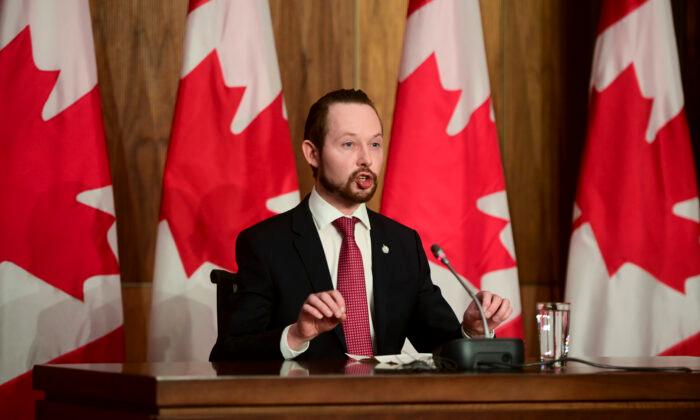Teams of engineering students across North America have been vying with each other in an ongoing three-year competition that gives them unprecedented access to the world of vehicle design.
In this year’s contest, the 2010 EcoCAR: The NeXt Challenge, teams from 16 universities in the United States and Canada competed to convert a GM-donated SUV into a hybrid, fuel cell, or electric vehicle while maintaining performance, safety, and consumer appeal.
Mississippi State University placed first, with a score of 844 out of a possible 1,000 points. Second-place winner was Virginia Technological Institute, while Pennsylvania State University came third.
The EcoCAR challenge is a three-year collegiate advanced vehicle technology engineering competition established by the U.S. Department of Energy and General Motors. GM provides production vehicles, vehicle components, seed money, technical mentoring, and operational support.
“When I look at the team members during this competition, I see passion in their eyes,” Karl Strake, VP for Global Development at GM, said at the awards ceremony.
“That is what we need in this industry, and for the future of automobiles.”
In Canada, the University of Victoria placed fourth overall and won four awards, including the National Science Foundation (NSF) Incoming Advisor Award. The University of Ontario Institute of Technology placed sixth and won two NSF awards, while the University of Waterloo placed eighth and won the NSF Outstanding Long Term Advisor award.
The Canadian government congratulated the teams for their efforts.
“The EcoCAR competition offers an excellent showcase for the talent and ingenuity of these students, as well as bringing us closer to our goal of realizing the full economic and environmental potential of these technologies,” Christian Paradis, Minister of Natural Resources Canada, said in a statement.
The finals for the 2010 competition, year two of the program, took place in San Diego last week. Aspects such as the vehicles’ drivability and performance were tested at the GM Desert Proving Ground in Yuma, Arizona.
The students explore a variety of cutting-edge clean vehicle solutions, including full-function electric, range-extended electric, hybrid, plug-in hybrid and fuel cell technologies. They also incorporate lightweight materials into the vehicles, improve aerodynamics, and utilize alternative fuels such as ethanol, biodiesel, and hydrogen.
The first year of the competition involved designing and modeling a proposed vehicle architecture and related component selection. In the fall of 2009, GM donated a new Saturn Vue to each school. In years two and three, students will make their design a reality and develop a working vehicle that meets the competition’s goals.
The teams come together at the end of each academic year to compete in more than a dozen static and dynamic events. Prizes each year amount to more than US$100,000.
Last year, the University of Victoria placed second to the University of Ohio for its design of an Extended Range Electric Vehicle that runs on electric power and E85 ethanol, one of the fuels approved for use in the competition.
Natural Resources Canada and Transport Canada jointly contributed a total of $500,000 to the program over three years.
In this year’s contest, the 2010 EcoCAR: The NeXt Challenge, teams from 16 universities in the United States and Canada competed to convert a GM-donated SUV into a hybrid, fuel cell, or electric vehicle while maintaining performance, safety, and consumer appeal.
Mississippi State University placed first, with a score of 844 out of a possible 1,000 points. Second-place winner was Virginia Technological Institute, while Pennsylvania State University came third.
The EcoCAR challenge is a three-year collegiate advanced vehicle technology engineering competition established by the U.S. Department of Energy and General Motors. GM provides production vehicles, vehicle components, seed money, technical mentoring, and operational support.
“When I look at the team members during this competition, I see passion in their eyes,” Karl Strake, VP for Global Development at GM, said at the awards ceremony.
“That is what we need in this industry, and for the future of automobiles.”
In Canada, the University of Victoria placed fourth overall and won four awards, including the National Science Foundation (NSF) Incoming Advisor Award. The University of Ontario Institute of Technology placed sixth and won two NSF awards, while the University of Waterloo placed eighth and won the NSF Outstanding Long Term Advisor award.
The Canadian government congratulated the teams for their efforts.
“The EcoCAR competition offers an excellent showcase for the talent and ingenuity of these students, as well as bringing us closer to our goal of realizing the full economic and environmental potential of these technologies,” Christian Paradis, Minister of Natural Resources Canada, said in a statement.
The finals for the 2010 competition, year two of the program, took place in San Diego last week. Aspects such as the vehicles’ drivability and performance were tested at the GM Desert Proving Ground in Yuma, Arizona.
The students explore a variety of cutting-edge clean vehicle solutions, including full-function electric, range-extended electric, hybrid, plug-in hybrid and fuel cell technologies. They also incorporate lightweight materials into the vehicles, improve aerodynamics, and utilize alternative fuels such as ethanol, biodiesel, and hydrogen.
The first year of the competition involved designing and modeling a proposed vehicle architecture and related component selection. In the fall of 2009, GM donated a new Saturn Vue to each school. In years two and three, students will make their design a reality and develop a working vehicle that meets the competition’s goals.
The teams come together at the end of each academic year to compete in more than a dozen static and dynamic events. Prizes each year amount to more than US$100,000.
Last year, the University of Victoria placed second to the University of Ohio for its design of an Extended Range Electric Vehicle that runs on electric power and E85 ethanol, one of the fuels approved for use in the competition.
Natural Resources Canada and Transport Canada jointly contributed a total of $500,000 to the program over three years.







